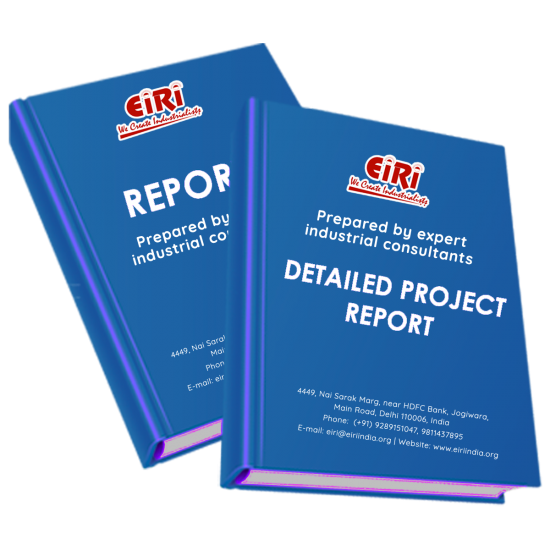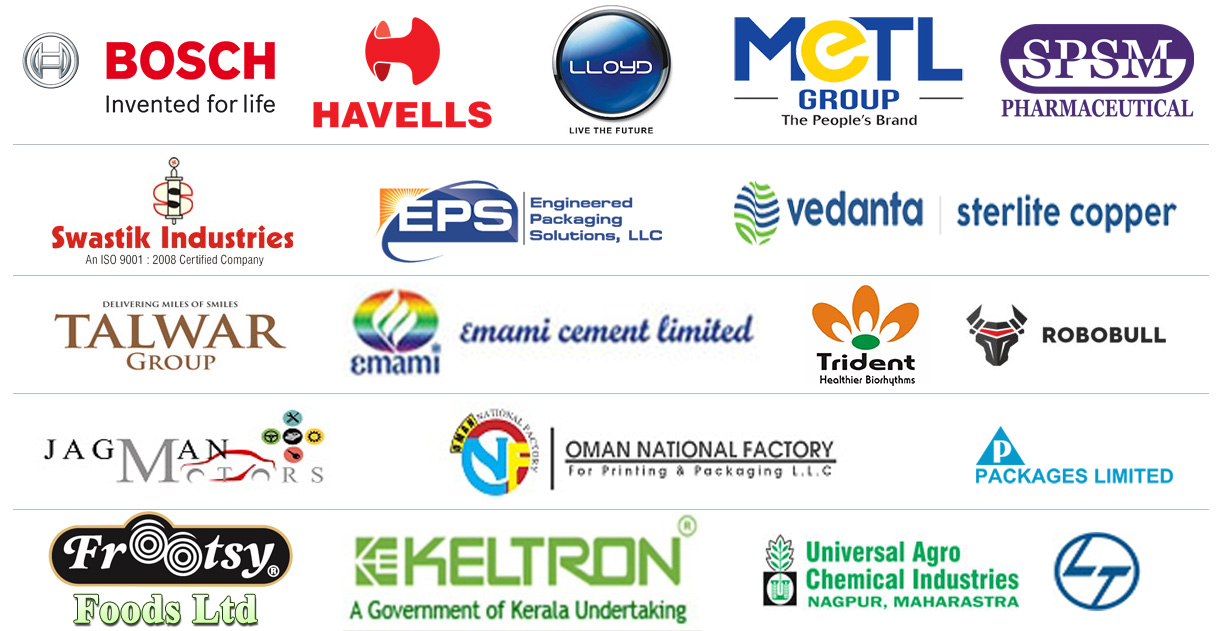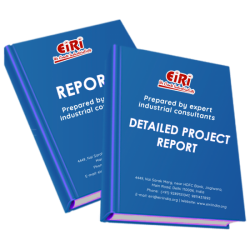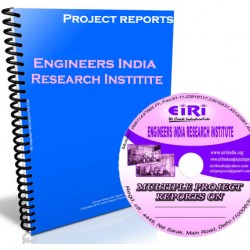Detailed Project Report on salt and liquid bromine

- More than 40 years of experience
- Managed by expert industrial consultants
- ISO 9001-2015 Certified
- Registered under MSME, UAM No: DL01E0012000
- 24/5 Research Support
Get your quesries resolved from an industry expert. Ask your queries before report or book purchase. - Custom Research Service
Speak to the our consultant to design an exclusive study to serve your research needs. - Quality Assurance
All reports are prepared by highly qualified consultants & verified by a panel of experts. - Information Security
Your personal & confidential information is safe & secure.
SALT AND LIQUID BROMINE
[CODE NO.4267]
Salt was the name originally given to the residue left by evaporation of sea water. Afterwards the name was employed to include all substances held in solution in sea water. Chemists ultimately extended the name to cover all combinations of an acid and a base. Sodium chloride (Nacl) now called common salt, is an example of the simplest type of chemical salt.
Sodium chloride, common salt, is essential to human life. Our bodies contain up to 450 grams of salt and we need to take in a few grams each week to stay healthy. The value of salt can be seen in the way Roman soldiers used to be paid in salt, leading to the phrase "worth his salt" and our word "salary". The growth of industry has increased the demand for salt, both for direct use and as a raw material for producing other chemicals.
Throughout the world the main sources of salt are sea water, lake water and rock salt deposits. Salt is recovered from the sea and lakes by evaporation. Rock salt may be mined like coal, or recovered by drilling wells into the salt bed, forcing down pure water and pumping up the saturated brine which forms.
It is a deep red fuming liquid, member of the halogen elements as Group VII of the periodic table that is liquid at ordinary temperature and pressure. Rare element bromine is found in, nature dispersed throughout the earth crust only in compounds such as soluble and insoluble bromides. The chief commercial source of bromine is ocean water from which the element is extracted by means of chemical replacement (oxidation) by more active chlorine. Bromine has traditionally been manufactured as a byproduct from saline mother liquors (bitterns) left after the crystallization of the main salt products.
The properties of bromine are significantly different from those of fluorine and chlorine. Discovered in the early 19th century, in the form of its salts (bromides) in the bitterns remaining after evaporating sea water and extracting the sodium chloride, it was obtained latter from stassfurt, Germany, as a byproduct in the production of potassium salts and from other deposits and salt lakes.
Its main use was originally for bromides in medicine still a minor use. Bromine first because of industrial importance with the development of modern photographic process, in which the light sensitive material is an emulsion of minute particles of silver bromide (together with silver chloride or iodide or both) in gelatin.
For a time, the expanding world automobile industry. Threatened a scarcity of bromine, obtained from brines, which contained about 0.5% bromine. To meet the demand, it was necessary to turn to sea water which contains about 70 ppm bromine.
The chief sources of bromine are sea water, brines and betters and the natural deposits of potassium salts. In these, it is present in very small quantities in the combined state. Sea-water contains, 66 parts per million (0.0066 %) of bromine and in 1933, the DOW Chemical Co., (U.S.A.) developed a process for its recovery. Large quantities of bromine are now being produced both from the sea and from the salt & lakes. The U.S.A. is now the world largest producer and used the entire output for the manufacture of ethylene bromine.
The other prominent bromine producing countries are Germany and France.
Bromine, a heavy, mobile, reddish-brown liquid with an interesting irritating odour, is the only non-metallic element that is a liquid at normal temperature. It is a diatomic molecule with the chemical formula Br2
The bromine available for extraction occurs as bromide in the ocean, in salt lakes and in brine or saline deposits left by evaporation of such waters by solar heat. Sea bitterns, the left over concentrated solution after the crystallizing out of salt from the sea water, are very rich in bromine and offer a good raw material for the manufacture of bromine. Bromine is extracted from seawater.
COST ESTIMATION
Plant Capacity 11.67 MT/Day
Land & Building (20 Acres) Rs. 24.34 Cr
Plant & Machinery Rs. 8.20 Cr
Working Capital for 1 Month Rs. 5.28 Cr
Total Capital Investment Rs. 39.03 Cr
Rate of Return 33%
Break Even Point 47%
- INTRODUCTION
- SOURCE AND SAFETY OF BROMINE
- SAFETY FIRST
- MARKET OVERVIEW OF SALT
- PRODUCTION OF SALT IN PAST FEW YEARS
- GROWTH OF CHLOR-ALKALI INDUSTRY OF INDIA
- DEMAND, HOWEVER, EXPECTED TO SEE MORE ROBUST GROWTH
- EXPORT OF SALT FROM INDIA
- INDIA'S SALT EXPORT (IN TONES)
- EXPORT OF SALT FROM GUJARAT
- EXPORT OF SALT FROM GUJARAT
- PROPERTIES OF SALT
- SALT IS A CHEMICAL COMPOUND WITH THE FOLLOWING PROPERTIES:
- POTASSIUM IODIDE
- PROPERTIES OF BROMINE
- MANUFACTURING PROCESS OF SALT FROM SEAWATER
- DETAILS OF SALT PURIFICATION PROCESS
- TABLE.1 - CONCENTRATIONS OF SOME IONS FOUND IN SEAWATER
- THE PRODUCTION OF SOLAR SALT
- THE PRODUCTION OF VACUUM SALT
- FURTHER PROCESSING
- PROCESS FLOW DIAGRAM FOR SALT RECOVERY FROM SEA WATER
- PRODUCTION METHODS OF SALT
- SOLAR EVAPORATION METHOD
- VACUUM PAN SALT PRODUCTION
- SALT PRODUCTION FROM BRINE
- SALT PRODUCTION BY SOLAR EVAPORATION OF SEA WATER
- BRINE EVAPORATORS AND SALT PRODUCTION
- EVAPORATED SALT PRODUCTION
- CRYSTALLISING EVAPORATORS
- VACUUM DRIERS
- 1. DRUM DRIER
- 2. VACUUM ROTARY DRIER
- USES AND APPLICATION OF BROMINE
- MARKET OVERVIEW OF BROMINE
- MAJOR BROMINE MANUFACTURING COUNTRIES
- INCREASING DEMAND FOR FLAME RETARDANTS
- MAJOR PLAYERS
- RAW MATERIAL SECTION
- MATERIALS OF CONSTRUCTION FOR CHLORINE HANDLING
- B.I.S. SPECIFICATIONS
- SCOPE
- REQUIREMENTS
- TABLE - 1: REQUIREMENTS FOR BROMINE, TECHNICAL
- PACKING & MARKETING
- PACKING
- MARKING
- SAMPLING
- ANALYSIS OF BROMINE, TECHNICAL
- CALCULATION:
- WHERE,
- DETERMINATION OF BROMINE
- PROCEDURE
- WHERE:
- WHERE
- DETERMINATION OF CHLORINE
- PROCEDURE
- CALCULATION
- WHERE,
- DETERMINATION OF NON-VOLATILE MATTER
- PROCEDURE
- CALCULATION
- WHERE,
- TEST FOR IODINE
- ZINC DUST
- TEST FOR SULPHATES
- PROCEDURE
- SAMPLING OF BROMINE TECHNICAL
- NUMBER OF CONTAINERS TO BE DRAWN FOR SAMPLING
- PROCESS OF BROMINE MANUFACTURE
- A) STEAMING OUT PROCESS (HOT PROCESS)
- B) AIR BLOWING PROCESS (COLD PROCESS)
- PRODUCTION OF BROMINE
- BLOCK SCHEME A - BROMINE PRODUCTION
- DEBROMINATION
- BLOCK SCHEME B - DEBROMINATION
- EXTRACTION OF BROMINE FROM SEA WATER
- OXIDATION OF BROMIDE TO BROMINE
- REMOVAL OF BROMINE WATER
- REDUCTION OF BROMINE TO HYDROBROMIC ACID
- OXIDATION OF HYDROBROMIC ACID TO BROMINE
- PRE TREATMENT FOR EXTRACTION BROMINE
- FIGURE: ACID PROCESS BROMINE PROCESS
- ETP PROCESS
- STAGES IN BROMINE MANUFACTURE
- OXIDATION OF BROMIDE IONS TO FORM BROMINE
- BROMINE VAPOUR REMOVAL
- PRODUCTION OF HYDROGEN BROMIDE
- OXIDATION OF HYDROGEN BROMIDE TO BROMINE
- HOW A HAZARDOUS CHEMICAL LIKE BROMINE IS HANDLED
- DETAILS OF LIQUID BROMINE MANUFACTURE
- PROCESS
- THE FOUR PRINCIPAL STEPS IN BROMINE PRODUCTION ARE
- STEAMING OUT PROCESS
- DOW PROCESS
- SAFETY IN BROMINE PLANT
- SAFE HANDLING OF BROMINE LEAKAGE
- SAFE STORAGE OF BROMINE
- SAFE TRANSPORTATION OF BROMINE
- THE BROMINE STORAGE TANK SIGN IS AS FOLLOWS:
- DETAILS OF EXTRACTION BROMINE FROM SEA WATER
- FROM SEA WATER
- RAW MATERIAL
- BLOCK DIAGRAM FOR MANUFACTURING PROCESS
- REACTION
- PROCESS DIVIDES IN THREE STEPS
- AIR POLLUTANT EMISSIONS & THEIR CONTROL
- ADDRESSES OF RAW MATERIALS SUPPLIERS
- ADDRESSES OF PLANT & MACHINERY SUPPLIERS
- MACHINERY SUPPLIERS OF SALT FARMING
- SUPPLIERS OF EFFLUENT TREATMENT PLANT
- SUPPLIERS OF HEAT EXCHANGER
- SUPPLIERS OF CONDENSER
- SUPPLIERS OF DISTILLATION COLUMN
- SUPPLIERS OF STORAGE VESSEL (STORAGE TANKS)
- SUPPLIERS OF LABORATORY EQUIPMENTS
- SUPPLIERS OF D.G. SETS
- SUPPLIERS OF BOILERS
- SUPPLIERS OF EFFLUENT TREATMENT PLANT (ETP PLANT)
- SUPPLIERS OF INSTRUMENTATION & PROCESS CONTROL EQUIPMENTS
- GOVT. LICENSE DETAILS FOR LIQUID BROMINE PLANT
APPENDIX – A:
01. PLANT ECONOMICS
02. LAND & BUILDING
03. PLANT AND MACHINERY
04. OTHER FIXED ASSESTS
05. FIXED CAPITAL
06. RAW MATERIAL
07. SALARY AND WAGES
08. UTILITIES AND OVERHEADS
09. TOTAL WORKING CAPITAL
10. TOTAL CAPITAL INVESTMENT
11. COST OF PRODUCTION
12. TURN OVER/ANNUM
13. BREAK EVEN POINT
14. RESOURCES FOR FINANCE
15. INSTALMENT PAYABLE IN 5 YEARS
16. DEPRECIATION CHART FOR 5 YEARS
17. PROFIT ANALYSIS FOR 5 YEARS
18. PROJECTED BALANCE SHEET FOR (5 YEARS)
How to Make Project Report?
Detailed Project Report (DPR) includes Present Market Position and Expected Future Demand, Technology, Manufacturing Process, Investment Opportunity, Plant Economics and Project Financials. comprehensive analysis from industry covering detailed reporting and evaluates the position of the industry by providing insights to the SWOT analysis of the industry.
Each report include Plant Capacity, requirement of Land & Building, Plant & Machinery, Flow Sheet Diagram, Raw Materials detail with suppliers list, Total Capital Investment along with detailed calculation on Rate of Return, Break-Even Analysis and Profitability Analysis. The report also provides a birds eye view of the global industry with details on projected market size and then progresses to evaluate the industry in detail.
We can prepare detailed project report on any industry as per your requirement.
We can also modify the project capacity and project cost as per your requirement. If you are planning to start a business, contact us today.
Detailed Project Report (DPR) gives you access to decisive data such as:
- Market growth drivers
- Factors limiting market growth
- Current market trends
- Market structure
- Key highlights
Overview of key market forces propelling and restraining market growth:
- Up-to-date analyses of market trends and technological improvements
- Pin-point analyses of market competition dynamics to offer you a competitive edge major competitors
- An array of graphics, BEP analysis of major industry segments
- Detailed analyses of industry trends
- A well-defined technological growth with an impact-analysis
- A clear understanding of the competitive landscape and key product segments
Need Customized Project Report?
- Ask for FREE project related details with our consultant/industry expert.
- Share your specific research requirements for customized project report.
- Request for due diligence and consumer centric studies.
- Still haven't found what you're looking for? Speak to our Custom Research Team
About Engineers India Research Institute:
Note: We can also prepare project report on any subject based on your requirement and country. If you need, we can modify the project capacity and project cost based on your requirement.
Our Clients

Our Approach
- Our research reports comprehensively cover Indian markets (can be modified as per your country), present investigation, standpoint and gauge for a time of five years*.
- The market conjectures are produced on the premise of optional research and are cross-accepted through associations with the business players
- We use dependable wellsprings of data and databases. What's more, data from such sources is handled by us and incorporated into the report
Why buy EIRI reports?
- Our project reports include detailed analysis that help to get industry Present Market Position and Expected Future Demand.
- Offer real analysis driving variables for the business and most recent business sector patterns in the business
- This report comprehends the present status of the business by clarifying a complete SWOT examination and investigation of the interest supply circumstance
- Report gives investigation and top to bottom money related correlation of real players/competitors
- The report gives gauges of key parameters which foresees the business execution























